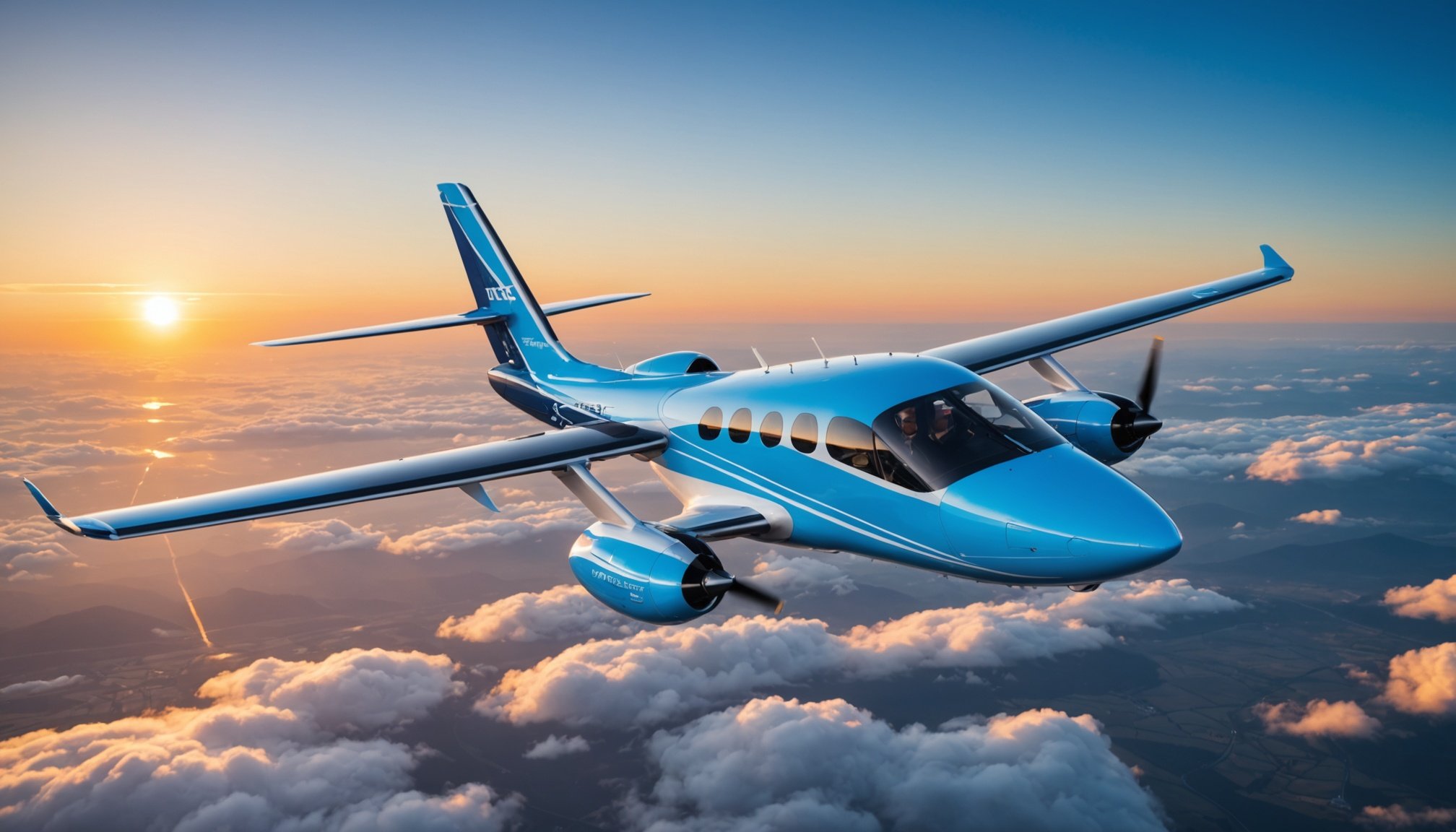Overview of Electric Aircraft Technology Advancements
The world of aviation technology is witnessing a remarkable transformation with the emergence of electric aircraft. Driven by the urgent need for sustainability, recent advancements are reshaping how we approach short-haul flights. These aircraft not only promise reduced carbon emissions but also aim for efficiency improvements.
One notable advancement is the improved battery storage capability, allowing electric aircraft to cover greater distances on a single charge. This directly ties into efficiency metrics, as these aircraft use energy more judiciously compared to their traditional counterparts. Moreover, advancements in lightweight materials contribute to reduced energy consumption, enhancing overall flight performance.
Also to read : Unlocking the future: cutting-edge biometric security solutions for enhanced safety in banking transactions
Sustainability is at the heart of these innovations, as the aviation sector strives to reduce its carbon footprint. By integrating electric propulsion systems with renewable energy charging solutions, the industry takes a significant step towards eco-friendly flying. Not only do these advancements contribute to environmental preservation, but they also promise cost-effective solutions in the long run by reducing fuel dependency.
In conclusion, as electric aircraft technology continues to mature, the promise of a cleaner, more efficient, and sustainable aviation future becomes increasingly achievable, guiding the industry towards a new era of exploration and progress.
Have you seen this : Transformative fiber optic innovations boosting internet speed and dependability in the uk”s remote areas
Breakthrough Innovations in Electric Aircraft
Electric aviation is witnessing breakthrough innovations that revolutionise aircraft efficiency and performance. These innovations focus on enhancing battery technology, propulsion systems, and aerodynamics to compete with traditional aircraft technologies. One of the most significant advancements is the development of high-energy-density batteries. These batteries provide longer flight times and quicker recharge rates, crucial for efficient electric aircraft operations.
Comparing traditional and electric aircraft technologies reveals stark differences, particularly in fuel efficiency and emissions. Traditional planes are reliant on fossil fuels, contributing significantly to carbon emissions. In contrast, electric aircraft utilise renewable energy, reducing the aviation industry’s carbon footprint. Another key innovation is the use of lightweight composite materials, which enhances aircraft efficiency by decreasing weight and improving aerodynamics.
Real-world examples highlight the potential of electric aviation. Companies like ZeroAvia and Eviation are spearheading projects demonstrating that electric aircraft can achieve comparable performance to their traditional counterparts. For instance, Eviation’s Alice aircraft showcases increased efficiency with its all-electric design, aiming for a zero-emission future. These advancements mark a pivotal moment, making electric aviation a viable and environmentally friendly alternative in the air travel sector.
Case Studies of Innovative Electric Aircraft
Exploring electric aircraft case studies provides valuable insights into aviation innovation and its impact on industry trends. These case studies highlight the performance analysis of pioneering companies and startups in the field.
Case Study 1: Company A’s Electric Aircraft
Company A has made significant strides in the development of electric aircraft, focusing on improving energy efficiency and reducing environmental impact. Their latest model demonstrated remarkable performance metrics, notably achieving a 30% increase in flight duration compared to traditional fuel-driven aircraft. A key takeaway from this case study is the importance of integrating advanced battery technology to enhance flight performance. The success of Company A underscores the industry’s shift towards sustainable aviation solutions.
Case Study 2: Company B’s Developments
Company B has taken a different approach by developing hybrid-electric systems. This innovation balances electric benefits with the reliability of traditional engines, resulting in improved performance metrics such as reduced carbon emissions by 40%. The lessons learned here emphasize the feasibility of hybrid systems to meet current aviation standards while embracing aviation innovation. These developments could potentially shape future industry trends by offering practical, eco-friendly alternatives.
Case Study 3: Startups Pioneering Electric Aviation
Startups are pivotal in pushing the boundaries of electric aviation. Their experimental designs and agile approaches have led to groundbreaking performance analysis results, such as achieving zero-emission flights on short-haul routes. These startups’ success highlights the potential for disruptive aviation innovation and the importance of adaptability in future industry advancements.
Expert Insights on Electric Aircraft Efficiency
In the evolving world of aviation, expert opinions hold significant weight. Interviews with industry leaders and aviation experts provide valuable perspectives on the efficiency of electric aircraft. These insiders often highlight the potential of emerging technologies to revolutionize air travel. They frequently discuss how advancements in battery technology can lead to longer flight ranges and reduced environmental impact.
Industry insights further reveal that as the technology matures, we can expect broader adoption of electric aircraft, not just for short-haul journeys but potentially for intercontinental travel. Experts predict that battery efficiency will double by the next decade, making electric propulsion more viable for commercial use.
Another crucial aspect that these experts underscore is the regulatory impacts on electric aviation. Current industry standards necessitate rigorous testing and certification, which could influence the pace of electric aircraft development. Leaders in the field suggest that streamlined regulations and international collaboration could accelerate innovation.
These discussions emphasize the importance of proactive adaptation by manufacturers to meet regulatory frameworks. Thus, according to experts, the future of electric aircraft hinges on a complex interplay between technological progression and regulatory evolution.
Data and Metrics on Efficiency Improvements
Efforts to improve electric aircraft surge forward, driven by compelling efficiency data. Recent aviation metrics have showcased remarkable gains in propulsion and aerodynamics, bolstering the case for sustainable air travel.
Research findings underpinning these developments are illustrated in various studies. Notably, electric aircraft have demonstrated a significant boost in battery performance, leading to longer flight ranges and reduced energy consumption. This enhancement is pivotal, ensuring electric propulsion can eventually rival traditional aviation technology.
Infographics and graphs are employed to present these gains visually, making complex data accessible and engaging. For instance, one study offers a timeline of advancements, highlighting the reduction in energy usage per passenger mile over the past decade. This metric is crucial as it underscores tangible progress made in the bid to improve aerial efficiency.
Through precise and robust analysis, researchers have identified key areas impacting energy usage and performance. By applying these research findings, the aviation industry can continue advancing towards greener skies. As advancements unfold, there’s an inspiring potential for electric aircraft to transform air travel sustainability.
These developments not only promote efficiency but also underscore the importance of continued innovation and investment in electric aviation technologies.
Environmental Impact of Enhanced Electric Aviation
The shift towards electric aviation signifies a promising leap in environmental sustainability. Bolstering the green credentials of air travel, electric aircraft are poised to considerably reduce the aviation impact on our planet. Conventional aircraft are notorious for their significant carbon emissions; however, transitioning to electric propulsion slashes these drastically, especially for short-haul flights.
How Electric Aircraft Benefits the Environment
Air travel is infamous for its hefty carbon footprint. However, electric aircraft promise to cut down emissions significantly. As they rely on batteries and renewable sources, their zero-emission operations are more aligned with sustainable practices, tackling a substantial portion of the aviation industry’s environmental impact.
Future Outlook
The prospects for sustainability in the aviation sector are brighter than ever with emerging electric aviation technologies. As battery efficiency and renewable energy capabilities advance, electric aircraft could become more feasible for a broader range of flights. This progression not only enhances environmental sustainability but also paves the way for innovative solutions in reducing overall aviation impact. By embracing the potential of electric aircraft, the aviation industry is taking a critical step towards a greener and more sustainable future.











